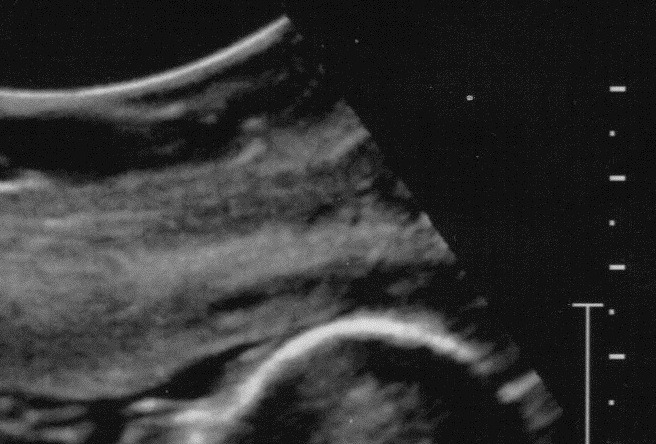Task 29 - A High-Frequency Ritual
You’re pregnant!
We are comfortable announcing this only because of a specific technology and the expertise of the person who deploys it. We attended the local hospital a few days ago to have the twelve-week ultrasound scan to discern if everything was ‘normal’ with the pregnancy. Ultrasound refers to the process of using the reflections of high-frequency sound waves to construct an image of a body organ and/or to observe foetal growth. I find it fascinating that ultrasound involves the translation of sound into image, and that it then involves the interpretation of that image. Put like that, the use of ultrasound technology seems as much a social as a scientific process. “It’s hard to see, but that’s a foot! That’s the bone of the nose. Look it’s waving! I think we can say that’s a happy baby!”
Of course, when we heard words like these, we were thrilled and relieved, but the practice of obstetric ultrasonography has been the subject of feminist enquiry precisely because it is a social practice and not some neutral activity of observation. (Did you know that ultrasonic waves were first used in order to detect submarines during WWII?) There are economic questions of differential access: who gets to have an ultrasound? In what countries and for which classes? (Portable and home kits can now be purchased.) The use of ultrasound raises questions of power-knowledge. What are we choosing to ‘see’ when we observe an ultrasound image? We are guided to observe a tiny, growing body to establish its ‘normality’—to confirm that it does not exhibit certain conditions—and later (if one chooses), to establish its sex. Therein begins the social process of gendering the child—even before its birth, that is. And of course, the observation of certain characteristics (for example, the potential for Down Syndrome or the belief the child will be born female) can motivate a termination.
If we are guided to identify a distinct body on the ultrasound screen, it is also the case that a relationship is being observed—the phenomenon of one body’s incubation of another being. A variety of powerful actors have an interest and investment in this phenomenon, and, in some contexts, ultrasound may even be part of a surveillance apparatus that holds women liable for prenatal harm or that imposes sanction on them after the birth of a sick or disabled infant.
Your task
Put mark making, one of the practices from the quick list we sketched out at the inception of the project, into relation with ultrasound technology. With reference to your experience of the ultrasound scan and to the printouts we were given of the screen captures, use drawing to allow your body to speak back to the investigative tech. What is it your body knows that the ultrasound can’t access? Can drawing articulate the continuity and the holistic experience of pregnancy against the social convention of the ‘milestone’, i.e. the twelve-week scan when ‘normality’ is determined and reproduced?

